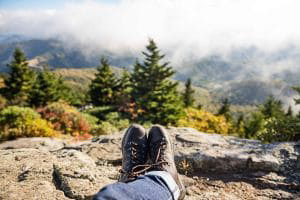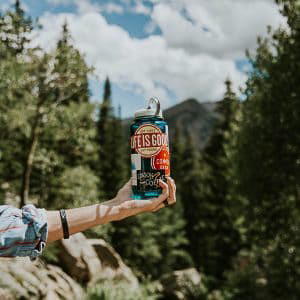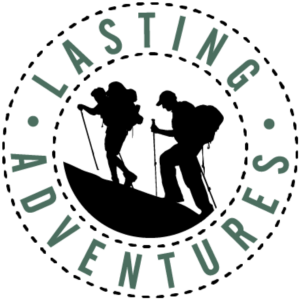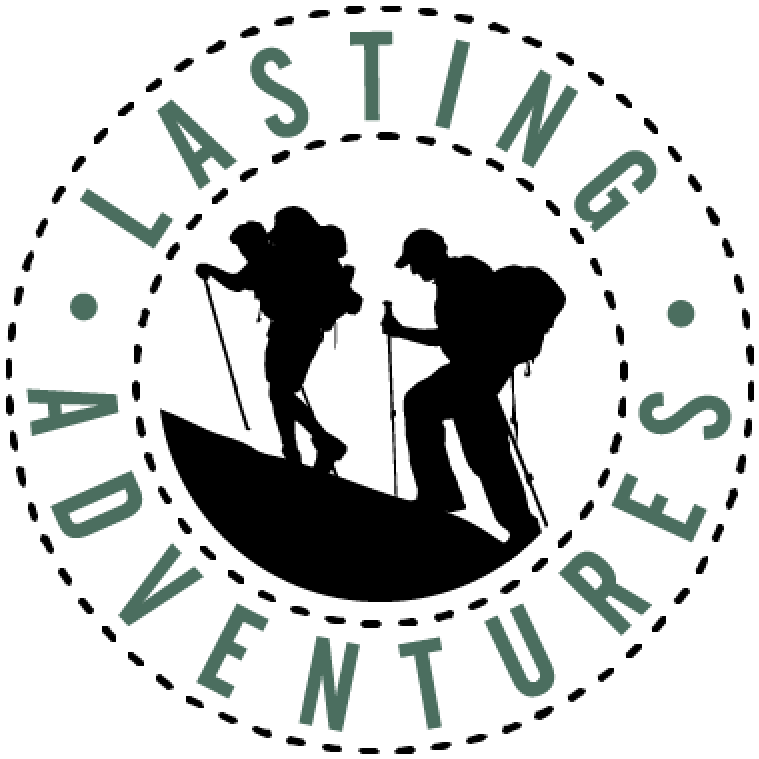By: Kimball Stewart
The first step to having a successful outdoor adventure isn’t finding the perfect Instagram shot. No, it’s not even buying the latest high-tech GPS. The first step is much simpler: take care of yourself! Amid the busy lives we lead it can be surprisingly difficult to practice good self-care. But nowhere is it more important to do so than in the outdoors.
Whether you’re backpacking through the Sierra Nevada, paddling down the Merced River, or just taking a day hike on your favorite local trail, making sure that you are listening to your body and reacting accordingly is critical to staying safe. Travel in the outdoors—especially in the backcountry—requires a heightened sense of awareness. The further you get from the trailhead (think: hospital) the less room there is for error. If you aren’t careful, a minor discomfort or ailment can quickly balloon into an emergency. To ensure your outdoor adventures remain fun and safe, learn to look out for yourself.
Three Common Outdoor Ailments
1. BLISTERS

We’ve all had them. They’re sneaky. And they hurt. Despite seeming innocuous, blisters have the power to cut a trip short. They can cause debilitating pain and make you wish you never left the couch. If blisters are not properly cared for they can become infected, causing a cascade of complications. But blisters do have one redeeming quality: they are easily prevented!
Tips for Prevention:
- Wear footwear that is well-fitted and broken in.
- Use sock liners (thin layer that goes between skin and socks to reduce friction)
- Wear socks that are clean and dry
- Use gaiters to reduce the amount of dirt and sand that sneak into your boot/shoe
- Stop and apply a piece of moleskin the instant you feel a hotspot or area of discomfort
Treatment:
Generally, the goal with treating a blister is to minimize the friction between your skin and your sock by placing a barrier between the two. The simplest and most effective barrier is moleskin, a soft band-aid-like adhesive. Cut a piece of moleskin into a doughnut-shape and place it so your blister fits in the hole. The aim is that by elevating the area around the blister, the moleskin will take the brunt of the friction—instead of the blister itself. If you want to be certain that the moleskin will stay in place, you can apply Benzoin which acts as a skin-safe glue (available at most pharmacies).
2. HYPOTHERMIA

One of the most important acts of self-care is keeping your body unscathed by the elements. Becoming unintentionally cold or wet is frustratingly easy when traveling outdoors. And the consequences can be dire. Hypothermia doesn’t require much to settle in and stay. Most of us have experienced mild hypothermia: shivering. It’s usually just inconvenient more than anything. But if the body is cold for long enough, hypothermia can impair your coordination, judgement, and ability to care for yourself. Listed below are some precautions you can take to keep yourself warm and dry.
Tips for Staying Warm:
- Stay well-fed! Recreating outdoors is no time to skimp on calories—your body needs fuel to keep itself warm.
- Layer your clothing so you have multiple distinct barriers.
- Wear a hat! You lose most of your heat through your noggin.
Tips for Staying Dry:
- Always carry a spare set of base layers in a plastic bag.
- Wear a waterproof but breathable shell when adventuring in the rain.
- Try to minimize how much you sweat. Yes, that’s easier said than done.
- Never let your sleeping bag get wet. Wrap it in a garbage bag if needed. A dry sleeping bag is your lifeline!
BONUS: Staying warm in your sleeping bag:
Being too cold to fall asleep at night is tortuous. Luckily there are a few simple things you can do to get warm in your sleeping bag. It’s important to understand that your sleeping bag doesn’t actually warm you, but rather you warm it. Sleeping bags serve as an insulator—they’re designed to retain heat. If you’re cold, do something inside your bag to generate body heat: sit-ups are an easy and effective option. You can also stuff extra clothes into your sleeping bag to reduce the amount of air that needs warming. Finally, there’s the hot water bottle trick. Before going to bed, heat up some water and put it in well-sealed and heat-resistant water bottle. Keeping this in your bag overnight can potentially make the difference between a sleepless night and restful night.
Treating Hypothermia:
Since hypothermia can impair your coordination and judgement, it’s much easier to treat in others than in yourself. Nonetheless, there are a few basic principles to consider when trying to regain warmth. Start by getting somewhere sheltered. Remove all your wet clothes and replace them with the dry set that you’ve been lugging around with you. Then, drink something hot. Finally, if you’re able, keep your body moving. Do push-ups, jumping jacks, or anything to generate body heat.
3. DEHYDRATION

One of the leading contributors to backcountry incidents is dehydration. Like hypothermia, dehydration can impair your decision-making skills which can lead to a whole host of additional problems. An early sign of insufficient hydration is that dull headache that many of us have experienced. Rather than dismissing it as an inconvenience, take your headache seriously and consider what’s causing it. More often than not, drinking water (with electrolytes!) will help remedy the situation.
Tips for Prevention:
- Drink at least half a liter of water before beginning your day’s activities.
- Don’t wait until you’re thirsty to drink
- Add electrolytes to your water—you need salts too!
- Consider using a Camelbak-type system for more convenient access to your water
- Drink more water at higher elevations, in hot environments, and when you’re actively sweating.
Treatment:
Yup, you guessed it: hydrate! It’s important to replenish your body’s liquids in a safe and controlled manner. Although uncommon, it is possible to overhydrate. By simply drinking lots of water rapidly you run the risk of diluting your sodium levels—a condition referred to hyponatremia. To prevent this, make sure you that you’re consuming electrolytes (any salty food, really) in addition to your liquids.
By now, you might be growing weary of adventuring outdoors. Why leave the living room? Yes, it’s true that your chances of becoming hypothermic, dehydrated, or blistered while sitting on the couch are less than if you hit the trail. But by practicing good self-care it’s possible to manage those various risks and help validate your decision to go outside. What’s more, taking care of yourself doesn’t only benefit you, it benefits whomever you’re with. Only by remaining healthy yourself will you be able to care for others. Consider this next time you’re hiking with a group of friends. You’ll be happier and so will everyone else.
-Happy Hiking-

